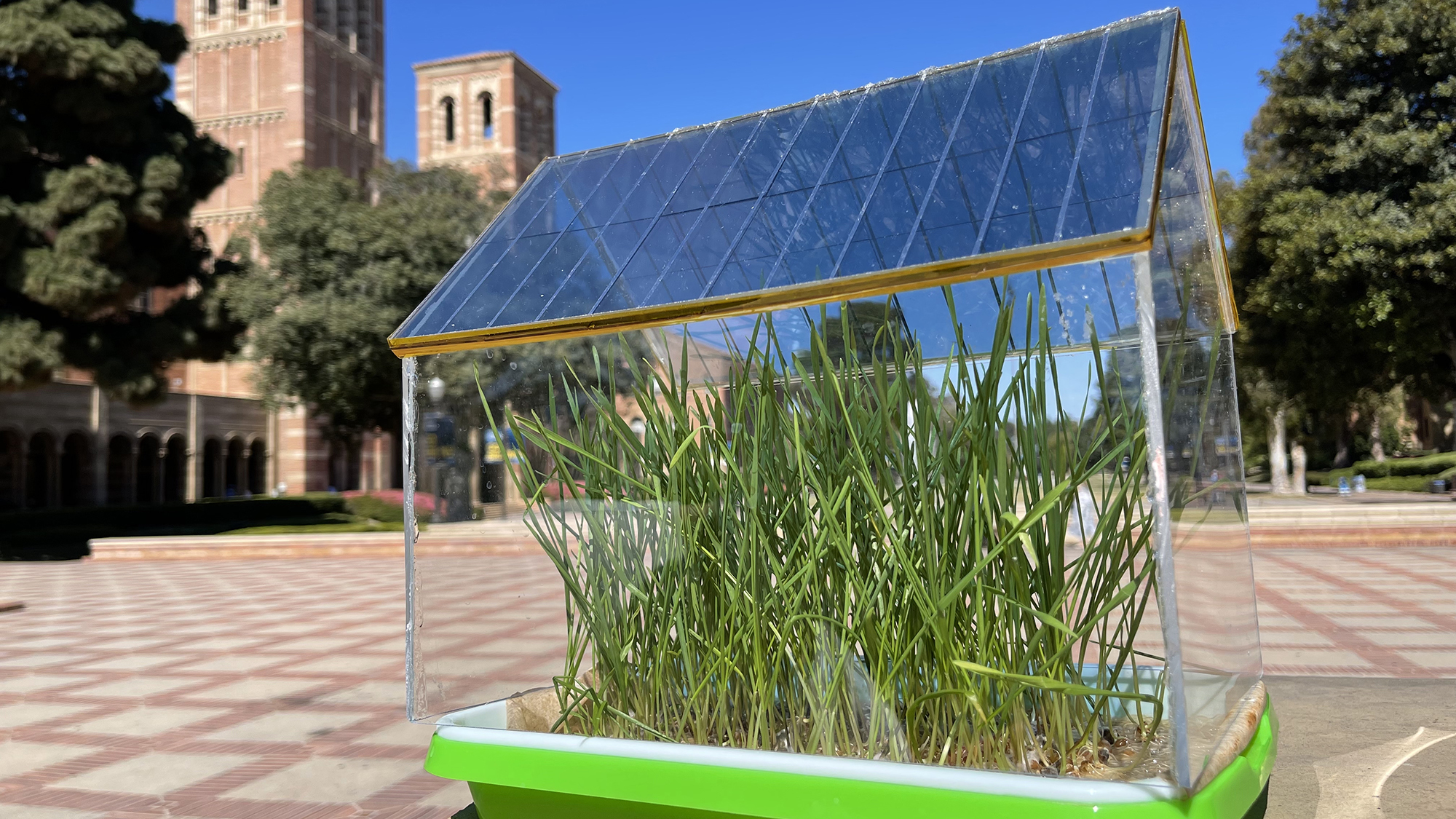

The field of agrivoltaics, in which land is used for both farming and solar power generation, has some basic logistical issues. Namely, it has been difficult to build structures that can both efficiently generate solar power while not blocking the sunlight needed for crops to actually grow. A team of researchers at UCLA recently discovered a novel solution to the issue that relies on organic materials. The process even outperforms conventional glass-roof greenhouses installed with traditional solar panel arrays.
[Related: Why your community’s next solar panel project should be above a parking lot.]
The team detailed their findings on Monday in Nature Sustainability, describing how integrating a layer of a naturally occurring chemical known as L-gluthathion can extend semi-transparent solar cells’ lifespans while also improving their efficiency. Yang Yang, a materials scientist at UCLA’s Samueli School of Engineering, explained that organic materials could be a major tool within agrivoltaics, because they selectivity absorb certain spectrums of light. Historically, however, they have been too unstable to widely deploy in the solar energy industry.
Inorganic solar cells’ organic counterparts often degrade extremely quickly as sunlight causes them to lose electrons through oxidation. By adding a thin layer of carbon-based L-gluthathion, the previously short-lived cells could maintain upwards of 80 percent efficacy after 1,000 usage hours—a major step up from the less than 20 percent efficacy over the same time period sans L-gluthathion.
[Related: Solar energy company wants to bolt panels directly into the ground.]
To test the new solar cells, Yang’s team compared the yields of two dollhouse-sized greenhouses growing broccoli, mung beans, and wheat. The transparent glass roof of one greenhouse was fitted with a number of traditional inorganic solar panels, while the other’s ceiling was entirely composed of the semitransparent organic panel arrays. To researchers’ surprise, the semitransparent greenhouse actually resulted in higher crop yields than its traditional counterpart. The team believes this could be thanks to the L-gluthathion layer blocking both ultraviolet and infrared rays—UV light often can damage plants, while infrared can heat greenhouses too much and cause crops to require more water.
Yang’s team hopes to eventually scale production of the new organic solar cells for widespread industrial usages.
New, efficient, partially organic designs, along with proposed projects like more parking lot canopies and cheaper home applications, could help insure solar power as one of nations’ key tools in transitioning to green, sustainable energy grids.
